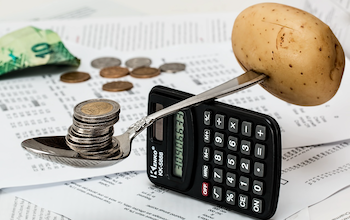
The tipping industry is ever-evolving, with constant updates in consumer trends and innovative solutions to modernize gratuity systems. It's important for both individuals and businesses alike to keep up with these changes, as they can have an impact on service industry payments and the customer experience.
In this article, we'll cover the most up-to-date trends and predictions for tipping in the future. We'll explore changes in service industry payments and modernized gratuity systems, with an eye on staying ahead of the curve. We'll also provide tips on how to anticipate changes and find solutions for businesses to optimize the customer experience.
Types of Service Providers
Tipping has long been a part of the traditional restaurant service industry. In the future, however, more restaurants are moving away from tipping as a service model. These restaurants are replacing the traditional model in favor of a service fee, often referred to as a ‘service inclusion’. This service fee is added to customers' bills, allowing restaurants to distribute tips evenly among all staff members, including back-of-house staff, and more accurately regulate wages for servers.
Rideshare services are increasingly becoming a popular transportation option and, much like modern restaurants, are slowly transitioning away from the traditional tipping model. With the rise of apps like Uber, Lyft, and DoorDash, many customers are forgoing cash and turning to electronic payment methods. Even so, many rideshare providers are still holding onto the traditional tipping model, though it may slowly be phased out over time. It’s expected that, in the future, more rideshare providers will introduce a ‘service fee’ to cover tips or implement a system that allows customers to tip electronically at the end of their ride.
Food delivery has seen an explosion in growth over recent years, especially with the ongoing pandemic. Delivery services such as GrubHub, Seamless, and DoorDash have become the go-to for ordering and receiving food. As with ridesharing, many delivery services are still utilizing the traditional tipping model but may transition to a service fee or other electronic tipping system in the future. Some services are already offering the option to tip electronically when ordering online or through an app.
Tipping culture is alive and well in the hospitality industry, including hotels. Many hotels offer an optional gratuity as part of their services and have been doing so for years. Most gratuity is paid in cash but in the future, more hotels are likely to introduce an optional service charge or the ability to tip electronically when checking out. This will offer more convenience for customers and provide an opportunity for hotels to manage tip disbursement more efficiently.
Fitness and wellness services have recently seen a surge in growth with many gyms, yoga studios, and spas introducing memberships for customers. While there is no official tipping protocol, some studios offer members the ability to donate tips through a web platform or mobile application. This allows instructors to receive payment digitally and quickly. In the future, more fitness and wellness centers will likely switch to a digital tipping system as a way of streamlining payments and customer satisfaction.
In conclusion, as technology advances, more service providers are transitioning away from the traditional tipping model. Instead, restaurants, rideshare services, food delivery services, hotels, and fitness/wellness centers are offering a service fee, digital tipping platforms, or both. This increases convenience for customers, allows servers at restaurants to make a more consistent wage, and provides gyms, spa, and yoga studios with more efficient payment options. With more companies introducing customizable tipping options, the modern service industry is expected to continue the trend of digital payment solutions for years to come.